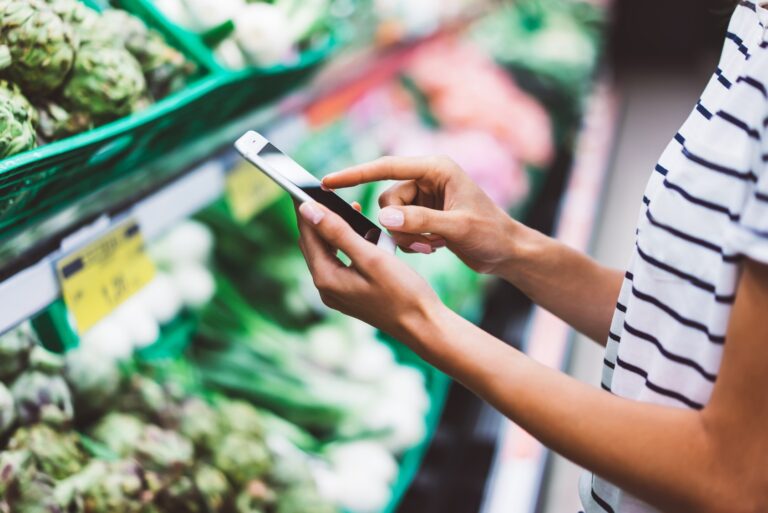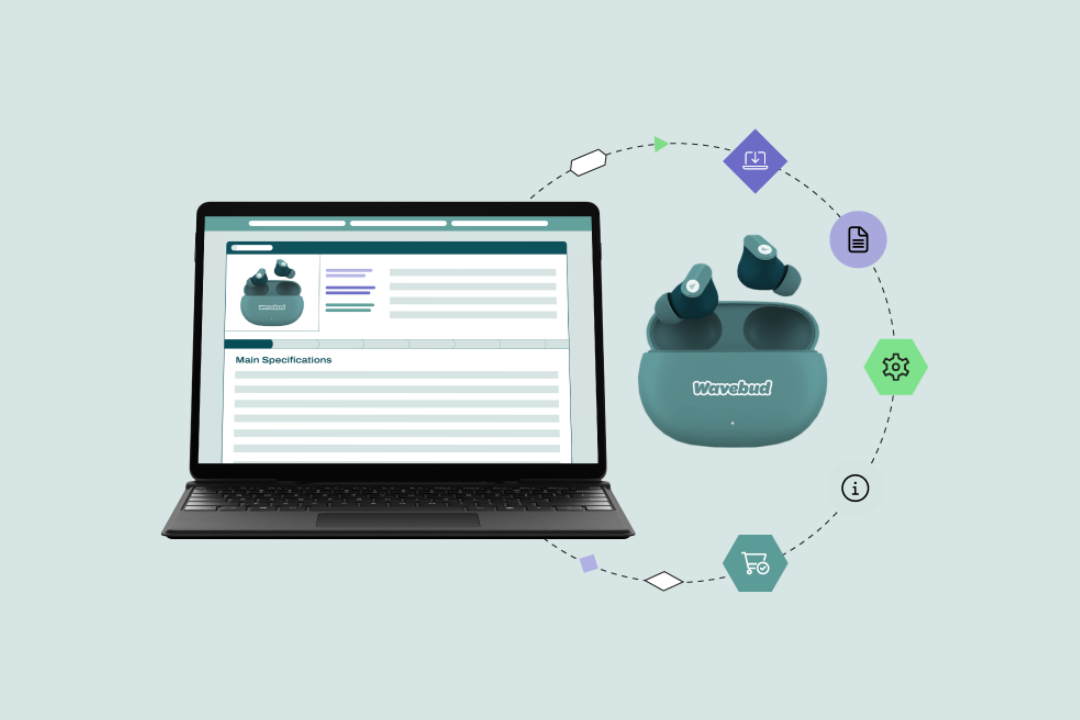Influencing food & grocery purchase decisions with high-quality product content
June 8, 2021

Whether it’s a consumer standing in a grocery store aisle or scrolling through online produce items, or a buyer supplying produce items to a restaurant, the expectations remain the same—food and grocery item attributes, Nutritional Fact Panel (NFP) information and product details for every single item must be consistent and easily locatable on the packaging each time to simplify purchasing decisions.
As grocers, food suppliers & distributors, restaurants and other stakeholders continue to navigate forward in the food & beverage (F&B) industry, many will continue to focus on improving experiences for their consumers. Examples include increasing transparency into the manufacturing facility origins and sourcing of food products, as well as providing consistent nutrient, ingredient and allergen warning information—both on the physical product packaging itself as well as across all e-commerce channels.
For some, this includes taking on never-before tried “risks” and areas of improvements—as shared during the May 2021 Power of 1 Virtual Summit—such as expanding into e-commerce for the very first time in the last 12-18 months or venturing into live streaming, echoed by Todd Hassenfelt, senior director of e-commerce for Simple Mills.
“During the pandemic, we were getting so much traffic coming to our product detail pages,” explained Hassenfelt. “We really had to revamp the content fast to make sure it wasn’t just a rotation of a product, but instead about communicating and connecting with the consumer using features and benefits like lifestyle images that showed when, how and why the product should be used.”
Embracing meal kit services, contactless curbside pick-up, restaurant subscription services, bundled meal packages, increased restaurant & grocery-item delivery services (direct and third party) also offered foodservice organizations ways to rebuild business in 2021.
Additionally, many industry improvements and required federal mandates help contribute to the process. The U.S. Food & Drug Administration’s (FDAs) new Nutrition Fact Panel (NFP) changes implemented earlier this year require packaged food manufacturers to update their labels to reflect the changes including (not limited to):
- “Added Sugars” in grams and as a percent Daily Value (%DV) is now required on the label
- Vitamin D and Potassium are now required; Vitamins A and C are no longer required
- The %DV footnote has been updated to help consumers understand the nutrition information in the context of a total daily diet
- The number of “servings per container” and the “Serving Size” declaration have increased and are now in larger and/or bolder type.
- “Calories” is now larger and bolder
The USDA Global Branded Food Products Database—which has unprecedented coverage of the food supply chain, including 341,518 branded food products with 238 food categories of both national and regional brands—also helps consumers make more informed purchasing decisions related to their health & wellness. (For more details, watch the on-demand Webinar, “Fueling Confident Commerce in Foodservice with Enriched Product Content.”)
Industry opportunities beyond the label
Additionally, consumers increasingly remain active participants in product attribution, basing their purchasing decisions on information beyond the standard product label.
“One of the things I look forward to is seeing that we’re providing flexibility not at the retailer level but at the consumer level,” explained Mondelez’s Leslie Henderson during the May 2021 #Powerof1 customer success panel, “Why Advancing Product Content Quality Is Essential to Confident Commerce.” “We need to be able to provide the information that the consumer needs to make their decisions and let them drive the questions for any product. If we come to a common and consistent data model—similar to what is being worked on with the global data model—that will really put the decision making in the hands of the consumer, giving them more product information that is consistent.” (Check out more industry insights here shared from the Power of 1 event.)
Consider that 23% more U.S. consumers prioritized sustainable food choices in 2020 versus 20191.And health and immunity-boosting ingredients will remain a dominating motivator for food choices among consumers resulting in forecasted growth in “functional foods and drinks” market of $229B by 20272.Growth in organic and natural food products as well as vegetarian diets, and food without additives/preservatives, will also continue to be driven by millennial and Gen Z audience demographic and population growth.
And as demand for more food product information and sourcing transitions from a “nice to have” to a “must have” approach, enriched product content (including food item attribution such as “sell by” packed on” information) in e-commerce sales will also help drive demand for quality food.
The benefits of enriched product content
- Enriched product content can help better close online order fulfillment for grocers
- Enhanced fresh meal offerings coupled with high-quality, interactive imagery can increase online ordering
- Accurate and complete product information can help grocers get product to consumers faster
- Standardized product data can eliminate grocer complexities and inefficiencies of manual processes
Attended grocery track 402 at the GS1 Connect 2021 Digital Edition conference, and part of the 1WorldSync Community? Navigate to the “GS1 Connect June 2021 Knowledge Base” page in Community and download the presentation
References
1. Tastewise, “4 insights into 2020’s sustainable food and beverage landscape,” Jan. 22, 2020
2. Business Wire, “Functional Foods and Drinks Market to Reach a Revised Size of $229 Billion by 2027 – Focus Shifts Towards Boosting the Immune System Amid COVID-19 ResearchAndMarkets.com,” May 20, 2020




